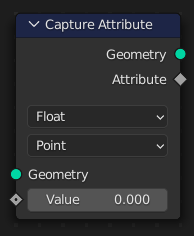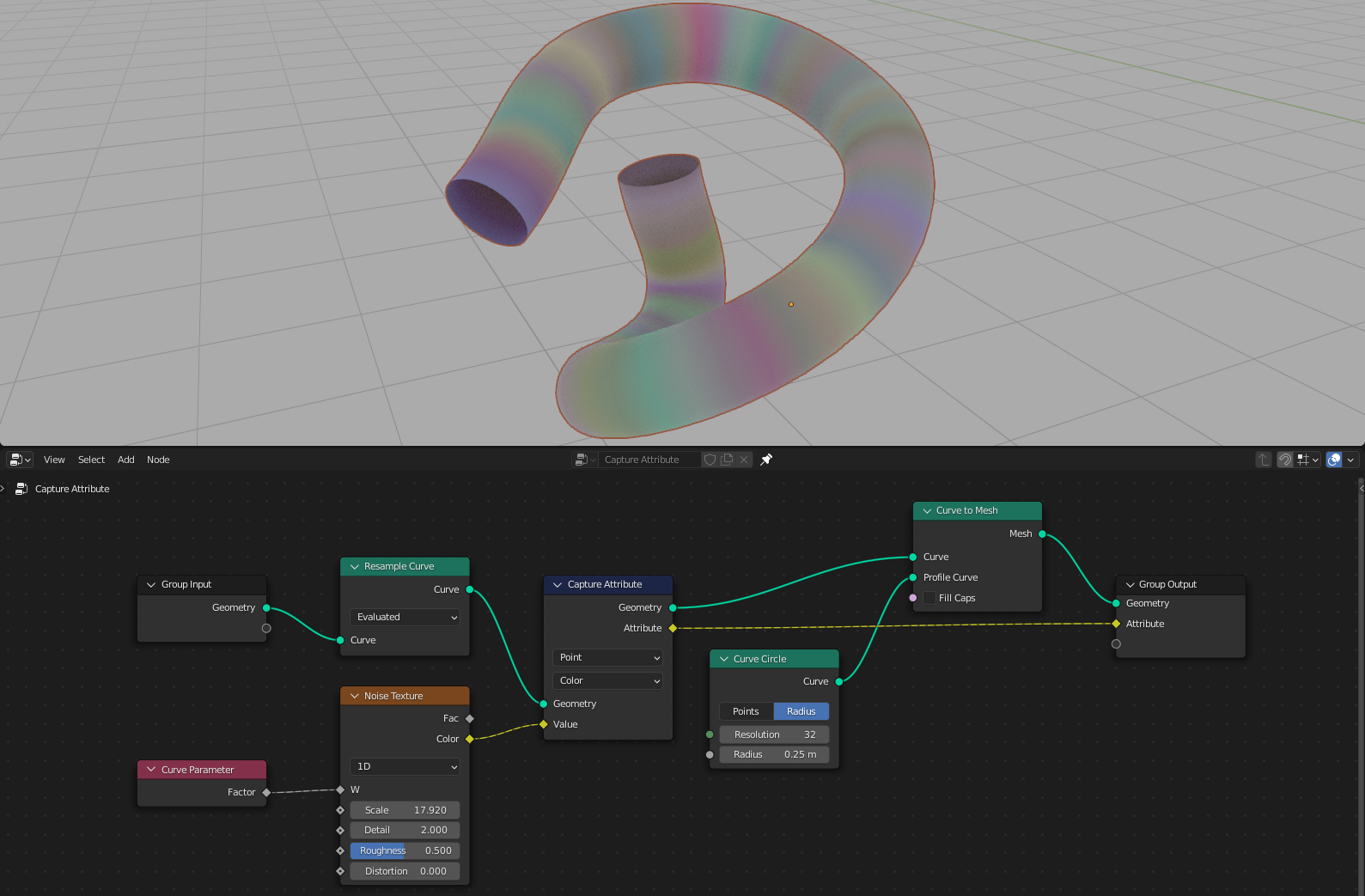捕捉属性¶

捕捉属性 节点存储几何体上的一个场的结果,并以节点接口的形式输出数据,这样它就可以被其他节点使用。
结果就像一个有名称的普通属性一样被存储在几何体上,但不是用名称来引用它,而是每当接口连接到一个节点的输入端时,它就被检索出来。以后在评估节点树时,如果不再使用该属性,它将被自动删除。
This node is essential because field input nodes like the 半径节点
work in the context of the node they are connected to. Meaning that in order to pass data like radius
to a geometry that doesn't have radius, an explicit node link with the output of this node must be used.
Note
因为这个节点在几何体中存储了一个匿名属性,在节点树中使用几何体的输出执行进一步的操作是非常必要的。除了输出的几何体,这个匿名属性不会存在于任何其他几何体中。
输入¶
- 几何数据
标准的几何图形输入。
- 捕捉项目
The input field to evaluate. More fields can be added by dragging sockets into the blank socket or in the Capture Items panel. Items can be renamed by Ctrl-LMB on the socket name or in the nodes Properties panel.
属性¶
- 域
要用于存储评估数据的属性域。
捕捉项目¶
参考
- 菜单:
Manages the input fields sockets of the node. Field sockets can be added, removed, reorganized, and renamed from the 列表视图.
- 数据类型
要用于评估数据的数据类型。
输出¶
- 几何数据
标准的几何体输出。
- 属性
被评估的场的结果,存储在几何体上。
示例¶

在这里,噪波纹理沿着曲线的路径在一个维度上被评估,并通过着色器进行渲染。捕捉节点是必需的,因为 曲线 转换为 网格 的输出没有 "曲线参数",它是一个网格而不是一条曲线。所以,样条线参数 必须在几何体仍然是曲线的时候进行评估。
在内部,噪波纹理在曲线上被评估后,会自动复制到曲线到网格节点的网格结果中。这意味着这个节点的 属性 输出可以沿着同一几何节点流连接的任何地方,内部属性都可以使用。